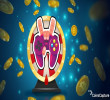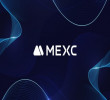7 November 2025
NFTs And The Future Of The Art World
The advent of blockchain technology has given rise to Non-Fungible Tokens (NFTs), unique digital assets representing ownership of tangible and intangible items. While initially associated with the realm of digital collectibles and virtual gaming, NFTs have swiftly transcended these niches to profoundly impact the art world. This article examines the ways in which NFTs are transforming the art industry, including their technological foundations, advantages, and challenges.
Bybit offer: Deposit $50, and GET 10 USDT (withdrawable)!
Understanding NFTs in Art
NFTs represent a new era of art ownership, allowing artists to tokenize their creations and establish digital certificates of authenticity, securely recorded on the blockchain. The unique nature of NFTs ensures that each artwork is distinguishable and verifiable, attributing value to both the art piece and its ownership. Through this process, artists can receive royalties when their art is resold, leading to increased recognition and compensation.
Also read: Top 6 Cryptocurrency Wallets For NFTs In 2023
Empowering Artists and Creators
One of the most profound impacts of NFTs on the art world is the empowerment of artists and creators. NFTs enable artists to bypass traditional gatekeepers and directly connect with their audience, facilitating greater autonomy in showcasing and monetizing their work. The elimination of intermediaries, such as galleries and auction houses, can lead to more equitable revenue distribution and a stronger artist-audience relationship.
Enhanced Digital Art Market
NFTs have revolutionized the digital art scene, giving artists the recognition they truly deserve. Previously, digital creations were overlooked and underappreciated, but now, they can flourish in a thriving and lucrative ecosystem. It's heartwarming to witness digital artists gaining newfound respect and financial rewards for their talents. This has democratized the art world, allowing anyone with a creative spirit to be part of something bigger. Digital art has finally stepped into the spotlight, earning its place alongside traditional art forms, embracing its value as an essential part of human expression and culture.
Ownership and Provenance
The immutable nature of blockchain ensures that NFTs provide irrefutable proof of ownership and provenance. With every transaction recorded on the blockchain, the origin and history of an artwork are easily traceable. This transparency instills confidence in buyers, fostering trust and legitimacy in the art market, especially in cases where forgery and art theft have been persistent concerns.
Expanding the Art Collector Base
NFTs have opened the art world to a wider global audience, transcending geographical limitations and attracting new collectors from diverse backgrounds. The ease of digital transactions and fractional ownership options enable potential collectors to participate in the art market with smaller investments, thus diversifying the collector base and stimulating demand for artworks.
Challenges and Criticisms
Despite the numerous advantages NFTs offer, they are not without challenges and criticisms. High energy consumption in blockchain operations and environmental concerns related to Proof-of-Work protocols have raised questions about the sustainability of NFTs. Additionally, the art world has witnessed instances of plagiarism, copyright infringement, and issues regarding ownership rights, necessitating further legal and regulatory scrutiny.
NFTs and Cultural Impact
Beyond their economic implications, NFTs have sparked a cultural phenomenon. The intersection of art and technology has fostered new forms of artistic expression, encouraging collaboration between artists and technologists. Moreover, NFTs have initiated debates on the nature of ownership and the value of intangible assets in the digital age, influencing broader discussions on digital ownership rights.
The Future of NFTs in Art
The evolution of NFTs in the art world is an ongoing process with tremendous potential for further growth and innovation. As blockchain technology continues to mature, it is likely that issues such as energy consumption will be addressed, making NFTs more environmentally sustainable. Moreover, regulatory frameworks are expected to emerge, ensuring the protection of artists' rights and collectors' investments.
Conclusion
Non-Fungible Tokens (NFTs) have emerged as a groundbreaking force in the art industry, revolutionizing art ownership, distribution, and monetization. Empowering artists and creators, expanding the art collector base, and enhancing the digital art market are among the transformative impacts of NFTs. While challenges persist, the cultural and economic significance of NFTs in the art world is undeniable, paving the way for a new era of artistic expression and ownership. As we look to the future, it is imperative to strike a balance between innovation and responsibility, ensuring that NFTs continue to positively shape the art world.
Disclaimer: The author’s thoughts and comments are solely for educational reasons and informative purposes only. They do not represent financial, investment, or other advice.






